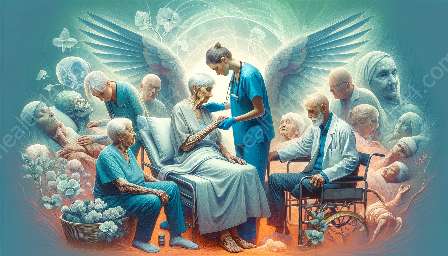As our population continues to age, the demand for geriatric care and expertise is on the rise. Care providers and individuals interested in geriatrics must be able to differentiate between normal aging and geriatric syndromes. In this comprehensive guide, we will explore the distinctive characteristics of normal aging and various geriatric syndromes, along with their impact on the elderly population.
Understanding Normal Aging
Normal aging is a natural and inevitable process that affects all individuals as they grow older. While aging brings about certain changes in physical, cognitive, and psychological domains, these changes do not necessarily indicate the presence of a medical condition or syndrome.
Physical changes associated with normal aging may include reduced muscle mass, decreased bone density, loss of skin elasticity, and diminished sensory functions. Cognitive changes may involve slower processing speed, mild forgetfulness, and a decline in multitasking abilities. Emotionally, many individuals experience adjustments in their emotional regulation, response to stress, and coping mechanisms.
Characteristics of Normal Aging:
- Gradual onset of changes
- Minor impact on overall daily functioning
- Compatibility with independent living
Geriatric Syndromes and Their Differentiation from Normal Aging
Geriatric syndromes encompass a broad spectrum of health conditions and issues that are prevalent among older adults. Unlike specific diseases, geriatric syndromes often involve multiple contributing factors and have complex presentations. Differentiating these syndromes from normal aging is essential for providing appropriate and targeted care.
Common Geriatric Syndromes:
- Falls and fall-related injuries
- Delirium
- Urinary incontinence
- Cognitive impairment and dementia
- Malnutrition
- Functional decline and disability
- Pain and frailty
These syndromes often coexist and intersect with one another, leading to heightened vulnerability and complexity in older individuals. Recognizing the following characteristics can aid in distinguishing geriatric syndromes from normal aging:
- Acute onset or rapid decline in function
- Significant impact on daily activities and independence
- Reversible or remediable under appropriate interventions
Impact on Geriatric Care
Understanding the distinctive features of normal aging versus geriatric syndromes is imperative for providing tailored and effective care to the aging population. The complexity of geriatric syndromes often necessitates a multidisciplinary approach involving medical, social, and psychological interventions.
Effective interventions for geriatric syndromes may include comprehensive geriatric assessments, personalized care plans, rehabilitation services, and caregiver support. Recognizing the interplay of various syndromes and their influence on an individual’s overall well-being is crucial for optimizing the quality of care provided to older adults.
Conclusion
Differentiating between normal aging and geriatric syndromes is a fundamental aspect of geriatric care. By understanding the unique characteristics and implications of each, care providers and individuals involved in geriatrics can enhance their ability to address the complex needs of older adults. Embracing a proactive and holistic approach to geriatric care not only promotes healthy aging but also fosters a supportive and enriching environment for seniors as they navigate the later stages of their lives.


